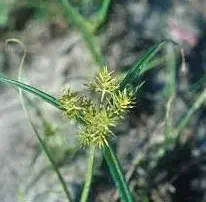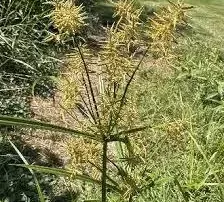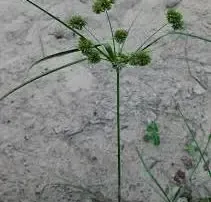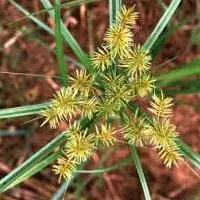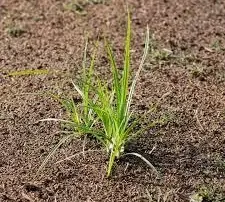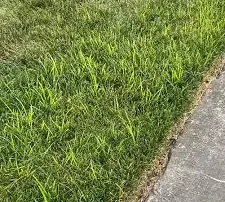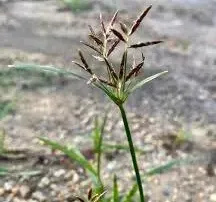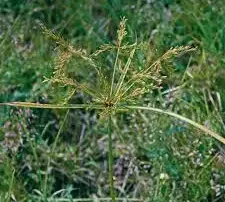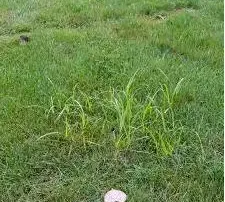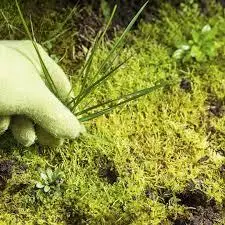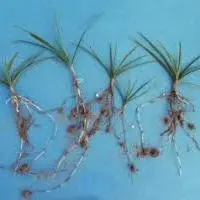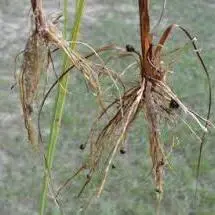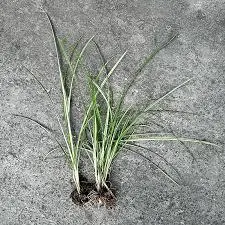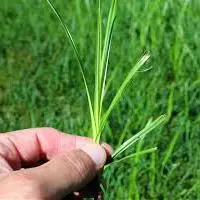Will Glyphosate Kill Nutsedge?
Nutsedge: Effective Strategies for Control
Nutsedge, particularly yellow nutsedge (Cyperus esculentus) and purple nutsedge (Cyperus rotundus), is one of the most persistent and troublesome weeds in lawns, gardens, and agricultural fields. Unlike many common weeds, nutsedge is not a grass but a sedge, and it grows faster, more aggressively, and in a different manner. This makes it notoriously difficult to control, leading many gardeners and landscapers to ask, “Will glyphosate kill nutsedge?“
The short answer is: Yes, glyphosate can kill nutsedge, but with some important considerations. In this article, we’ll discuss how glyphosate works on nutsedge, how to use it effectively, and why it might not always be the most comprehensive solution. We will also address key questions like “Does glyphosate kill nutsedge?” and provide insights on other control methods that can help you fully eradicate this weed.
How Does Glyphosate Work on Nutsedge?
Glyphosate is a systemic herbicide, meaning it is absorbed by the plant and translocated throughout its system, including the roots. When you apply glyphosate to the leaves or stems of the plant, it interferes with the plant’s metabolic processes, eventually causing it to die. For many broadleaf weeds and grasses, glyphosate is highly effective. However, when it comes to nutsedge, there are a few nuances to keep in mind.
- Above-Ground vs. Underground Parts: Glyphosate is effective at killing the above-ground parts of the nutsedge plant, such as the leaves and stems. However, nutsedge’s tubers (underground storage organs) can remain viable after the plant’s top growth has been killed, which means the weed can regrow from these tubers if not fully eradicated.
- Application Timing: For the best results, glyphosate should be applied when the nutsedge is actively growing, typically in spring or early summer, before it reaches full maturity. Applying glyphosate during these periods allows the herbicide to be absorbed and translocated into the roots and tubers.
Will Glyphosate Kill Nutsedge? Effectiveness and Limitations
Does glyphosate kill nutsedge effectively? Yes, but with limitations. While glyphosate can kill the visible parts of the nutsedge plant, its tubers are not always completely destroyed with one treatment. Nutsedge grows from its tubers, and if even a few remain, they can regenerate and cause new growth. This is why multiple applications of glyphosate may be necessary to fully control the plant.
- Multiple Applications: Since glyphosate only targets the top growth and may not destroy the nutsedge’s tubers entirely, repeated applications are often needed. After an initial treatment, you may see the plant die back, but some growth may return from the tubers. Reapply glyphosate when new growth appears, usually in the early summer or fall, to target these regrowths before they can produce new tubers.
- Root and Tuber Control: For more comprehensive control, it’s recommended to combine glyphosate with other specialized nutsedge control products, such as SedgeHammer or Halosulfuron-methyl. These products are formulated to specifically target and kill nutsedge’s tubers, preventing regrowth.
How to Apply Glyphosate for Nutsedge Control
To ensure the best chance of success, follow these application tips when using glyphosate to control nutsedge:
- Target Actively Growing Plants: Apply glyphosate when nutsedge is actively growing. The herbicide is more effective when the plant is in its growing phase and not stressed or dormant.
- Apply Directly to Leaves: Use a sprayer or paintbrush to apply glyphosate directly onto the leaves of the nutsedge plant. Be sure to coat the leaves thoroughly for maximum absorption.
- Avoid Overspray: Glyphosate is a non-selective herbicide, meaning it can kill any plant it touches. Be careful to avoid overspraying onto desirable plants, as it will damage or kill them as well.
- Repeat Treatments: Since glyphosate often does not kill nutsedge’s underground tubers on the first application, plan on repeating the treatment. Apply again in about 2-3 weeks if you see regrowth.
- Timing for Best Results: The most effective times to apply glyphosate are in the spring and early summer, during the plant’s most vigorous growth. Avoid applying glyphosate during extreme heat or when the plant is stressed, as it will not absorb the herbicide effectively.
Does Glyphosate Kill Nutsedge Completely?
While glyphosate does kill the above-ground parts of the nutsedge plant, it’s not a one-time solution for complete eradication. As mentioned earlier, the tubers of nutsedge can survive and regenerate, making multiple applications necessary for complete control.
For long-term control, it’s essential to:
- Control the Tubers: Glyphosate is effective at killing the above-ground growth, but it may not completely eliminate the tubers. To do this, use specialized nutsedge herbicides, like SedgeHammer, which are designed to target and kill the tubers, preventing regrowth.
- Cultural Control: Maintaining a healthy, competitive lawn or garden can also help prevent nutsedge from taking over. Dense, well-established grass can crowd out nutsedge, making it harder for the weed to establish new growth.
- Physical Removal: Hand-pulling nutsedge can also help, especially in areas where glyphosate may not be effective. Digging up the plant and its tubers can reduce the chances of regrowth.
Other Alternatives to Glyphosate for Nutsedge Control
While glyphosate can be effective, some gardeners and landscapers prefer alternatives or complementary methods to control nutsedge:
- SedgeHammer (Halosulfuron-methyl): This is a selective herbicide specifically designed for nutsedge. It targets the tubers and roots of the plant, providing more long-term control than glyphosate alone.
- Pre-emergent Herbicides: In areas where nutsedge is a recurring problem, using pre-emergent herbicides in the early spring can help prevent the weed from germinating. Pre-emergent herbicides, like Dimension or Barricade, can help reduce the spread of nutsedge by inhibiting seed germination.
- Mulching and Soil Management: Improving soil health and using mulch in garden beds can help suppress the growth of nutsedge by reducing the amount of light that reaches the soil surface, making it harder for nutsedge to establish itself.
Conclusion: Will Glyphosate Kill Nutsedge?
In conclusion, yes, glyphosate will kill nutsedge, but it may not provide a complete, one-time solution. Glyphosate effectively kills the above-ground parts of the plant, but it is often insufficient for controlling the tubers, which are responsible for regrowth. Multiple applications are usually required to achieve complete eradication.
To maximize the effectiveness of glyphosate, combine it with specialized nutsedge control herbicides like SedgeHammer, and employ cultural practices and physical removal techniques for long-term control. While glyphosate can be part of a successful nutsedge management strategy, using it in conjunction with other methods will give you the best chance of eliminating this persistent weed.
By using this approach, you’ll be able to answer the question, “Does glyphosate kill nutsedge?” with confidence, knowing that with the right timing, technique, and complementary treatments, you can finally take control of this invasive weed.
Nutsedge: Effective Strategies for Control
Nutsedge, particularly yellow nutsedge (Cyperus esculentus) and purple nutsedge (Cyperus rotundus), is one of the most persistent and troublesome weeds in lawns, gardens, and agricultural fields. Unlike many common weeds, nutsedge is not a grass but a sedge, and it grows faster, more aggressively, and in a different manner. This makes it notoriously difficult to control, leading many gardeners and landscapers to ask, “Will glyphosate kill nutsedge?“
The short answer is: Yes, glyphosate can kill nutsedge, but with some important considerations. In this article, we’ll discuss how glyphosate works on nutsedge, how to use it effectively, and why it might not always be the most comprehensive solution. We will also address key questions like “Does glyphosate kill nutsedge?” and provide insights on other control methods that can help you fully eradicate this weed.
How Does Glyphosate Work on Nutsedge?
Glyphosate is a systemic herbicide, meaning it is absorbed by the plant and translocated throughout its system, including the roots. When you apply glyphosate to the leaves or stems of the plant, it interferes with the plant’s metabolic processes, eventually causing it to die. For many broadleaf weeds and grasses, glyphosate is highly effective. However, when it comes to nutsedge, there are a few nuances to keep in mind.
- Above-Ground vs. Underground Parts: Glyphosate is effective at killing the above-ground parts of the nutsedge plant, such as the leaves and stems. However, nutsedge’s tubers (underground storage organs) can remain viable after the plant’s top growth has been killed, which means the weed can regrow from these tubers if not fully eradicated.
- Application Timing: For the best results, glyphosate should be applied when the nutsedge is actively growing, typically in spring or early summer, before it reaches full maturity. Applying glyphosate during these periods allows the herbicide to be absorbed and translocated into the roots and tubers.
Will Glyphosate Kill Nutsedge? Effectiveness and Limitations
Does glyphosate kill nutsedge effectively? Yes, but with limitations. While glyphosate can kill the visible parts of the nutsedge plant, its tubers are not always completely destroyed with one treatment. Nutsedge grows from its tubers, and if even a few remain, they can regenerate and cause new growth. This is why multiple applications of glyphosate may be necessary to fully control the plant.
- Multiple Applications: Since glyphosate only targets the top growth and may not destroy the nutsedge’s tubers entirely, repeated applications are often needed. After an initial treatment, you may see the plant die back, but some growth may return from the tubers. Reapply glyphosate when new growth appears, usually in the early summer or fall, to target these regrowths before they can produce new tubers.
- Root and Tuber Control: For more comprehensive control, it’s recommended to combine glyphosate with other specialized nutsedge control products, such as SedgeHammer or Halosulfuron-methyl. These products are formulated to specifically target and kill nutsedge’s tubers, preventing regrowth.
How to Apply Glyphosate for Nutsedge Control
To ensure the best chance of success, follow these application tips when using glyphosate to control nutsedge:
- Target Actively Growing Plants: Apply glyphosate when nutsedge is actively growing. The herbicide is more effective when the plant is in its growing phase and not stressed or dormant.
- Apply Directly to Leaves: Use a sprayer or paintbrush to apply glyphosate directly onto the leaves of the nutsedge plant. Be sure to coat the leaves thoroughly for maximum absorption.
- Avoid Overspray: Glyphosate is a non-selective herbicide, meaning it can kill any plant it touches. Be careful to avoid overspraying onto desirable plants, as it will damage or kill them as well.
- Repeat Treatments: Since glyphosate often does not kill nutsedge’s underground tubers on the first application, plan on repeating the treatment. Apply again in about 2-3 weeks if you see regrowth.
- Timing for Best Results: The most effective times to apply glyphosate are in the spring and early summer, during the plant’s most vigorous growth. Avoid applying glyphosate during extreme heat or when the plant is stressed, as it will not absorb the herbicide effectively.
Does Glyphosate Kill Nutsedge Completely?
While glyphosate does kill the above-ground parts of the nutsedge plant, it’s not a one-time solution for complete eradication. As mentioned earlier, the tubers of nutsedge can survive and regenerate, making multiple applications necessary for complete control.
For long-term control, it’s essential to:
- Control the Tubers: Glyphosate is effective at killing the above-ground growth, but it may not completely eliminate the tubers. To do this, use specialized nutsedge herbicides, like SedgeHammer, which are designed to target and kill the tubers, preventing regrowth.
- Cultural Control: Maintaining a healthy, competitive lawn or garden can also help prevent nutsedge from taking over. Dense, well-established grass can crowd out nutsedge, making it harder for the weed to establish new growth.
- Physical Removal: Hand-pulling nutsedge can also help, especially in areas where glyphosate may not be effective. Digging up the plant and its tubers can reduce the chances of regrowth.
Other Alternatives to Glyphosate for Nutsedge Control
While glyphosate can be effective, some gardeners and landscapers prefer alternatives or complementary methods to control nutsedge:
- SedgeHammer (Halosulfuron-methyl): This is a selective herbicide specifically designed for nutsedge. It targets the tubers and roots of the plant, providing more long-term control than glyphosate alone.
- Pre-emergent Herbicides: In areas where nutsedge is a recurring problem, using pre-emergent herbicides in the early spring can help prevent the weed from germinating. Pre-emergent herbicides, like Dimension or Barricade, can help reduce the spread of nutsedge by inhibiting seed germination.
- Mulching and Soil Management: Improving soil health and using mulch in garden beds can help suppress the growth of nutsedge by reducing the amount of light that reaches the soil surface, making it harder for nutsedge to establish itself.
Conclusion: Will Glyphosate Kill Nutsedge?
In conclusion, yes, glyphosate will kill nutsedge, but it may not provide a complete, one-time solution. Glyphosate effectively kills the above-ground parts of the plant, but it is often insufficient for controlling the tubers, which are responsible for regrowth. Multiple applications are usually required to achieve complete eradication.
To maximize the effectiveness of glyphosate, combine it with specialized nutsedge control herbicides like SedgeHammer, and employ cultural practices and physical removal techniques for long-term control. While glyphosate can be part of a successful nutsedge management strategy, using it in conjunction with other methods will give you the best chance of eliminating this persistent weed.
By using this approach, you’ll be able to answer the question, “Does glyphosate kill nutsedge?” with confidence, knowing that with the right timing, technique, and complementary treatments, you can finally take control of this invasive weed.

